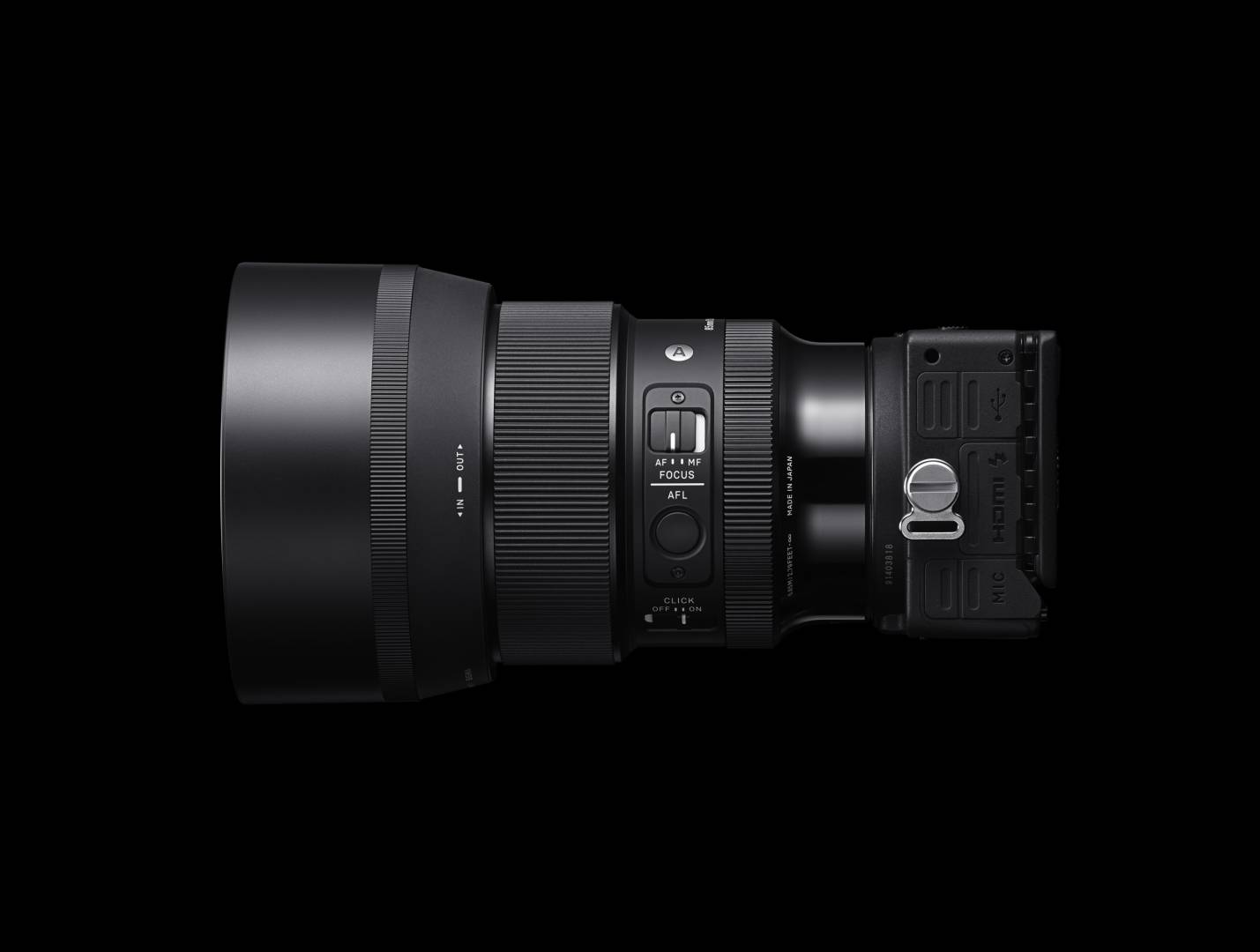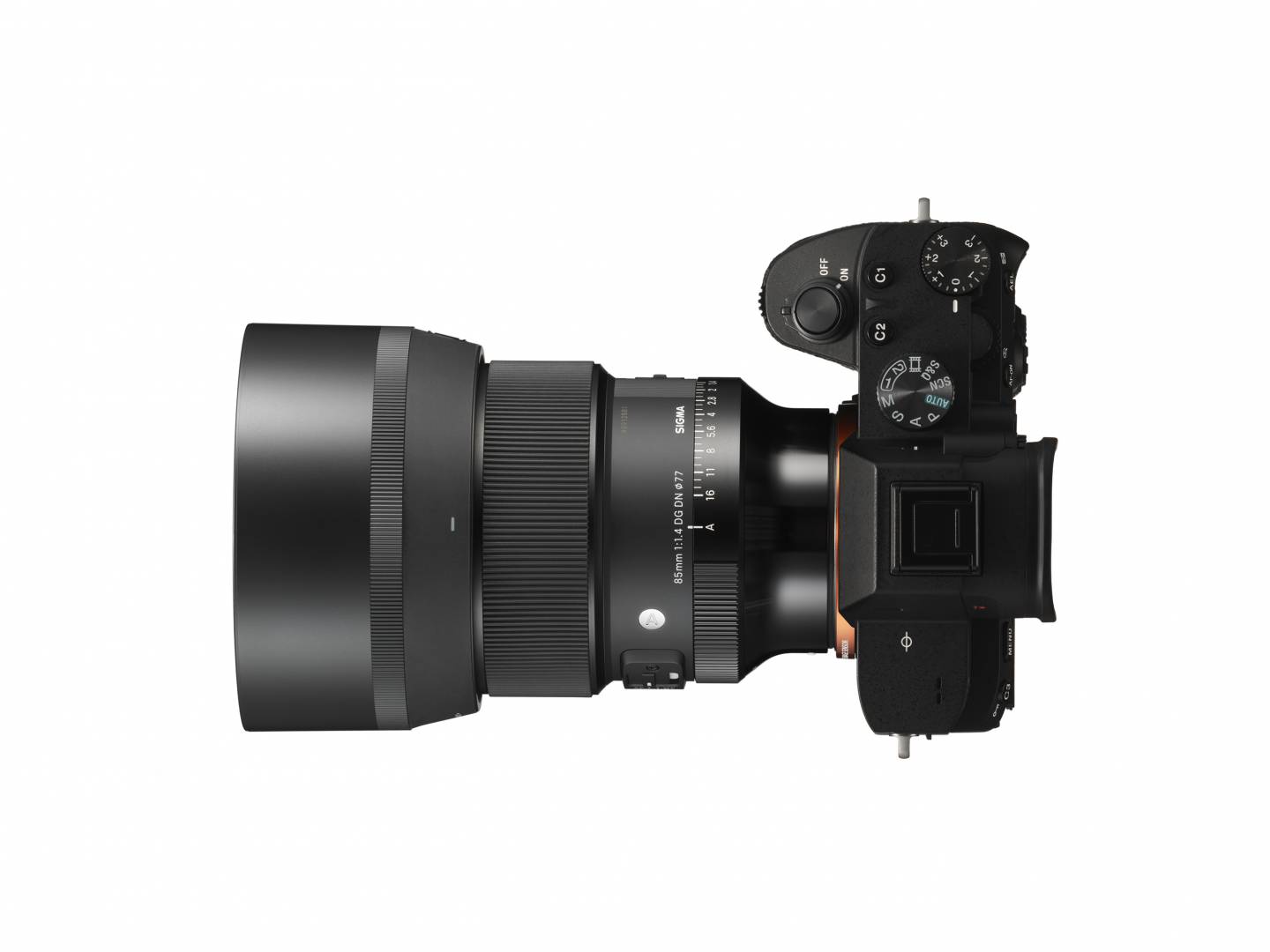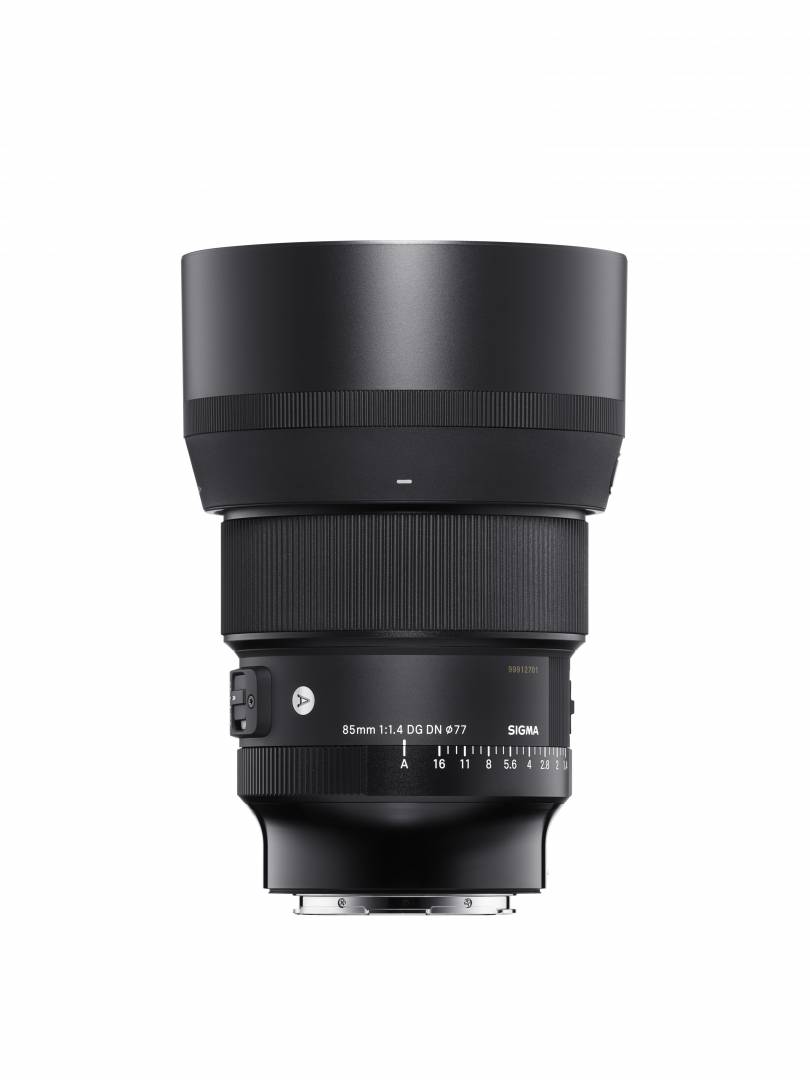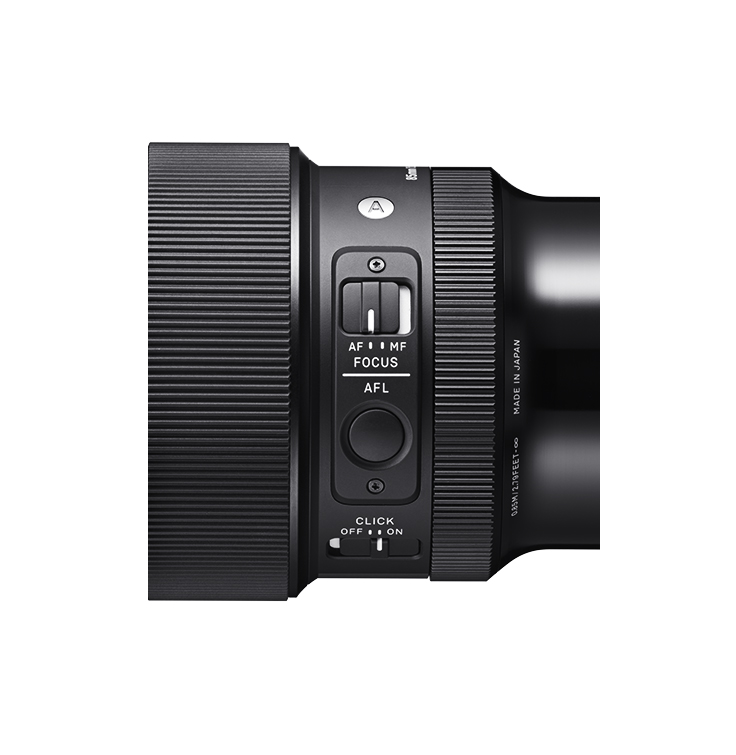The new Sigma 85mm f/1.4 DG DN Art lens has been designed specifically for mirrorless cameras, initially for L-Mount and E-Mount. The company claims unparalleled optical performance in a lightweight, robust body. The lens is also exceptionally light for its capabilities at 630g or 22.2oz.
With high-speed autofocus, the 85mm f/1.4 is described by Sigma as a “game changer for L-Mount photographers.”

Despite being some 45 percent lighter than the existing 85mm f/1.4 DG HSM Art lens, the redesigned version offers improved image quality, exceptional sharpness, clear and delicate rendering and creates a rich bokeh. Sigma claims that the lens is perfect for portraiture, wedding and event photographers.
The Sigma 85mm f/1.4 DG DN will retail in the UK for £999.
PRESS RELEASE
Key features
- Class-leading optical performance
An 85mm focal length and F1.4 aperture are specifications almost synonymous with a professional portrait lens. As with all Art line lenses, SIGMA has pursued the highest possible optical performance and employed the latest design and production technologies at SIGMA’s factory at Aizu, Japan. The optical design of the lens is completely different to the existing 85mm F1.4 DG lens in SIGMA’s current line-up.
In addition to five SLD elements and one aspherical element, the 85mm F1.4 DG DN | Art has incorporated the latest high-refractive-index glass, which works to correct aberrations that cannot be effectively handled by in-camera correction. With a particular emphasis given to the elimination of axial chromatic aberration, users will enjoy sharp images with no color bleeding all the way up to the maximum aperture of F1.4.
The high resolving power across the entire image from the centre to the edges of the frame ensures exceptional sharpness of the in-focus area, and coupled with a very shallow depth-of-field it’s easy to separate the subject from the background for captivating, high-impact portraits.
Numerous rounds of ray-trace simulations, as well as repeated real-world testing enabled SIGMA’s lens designers to minimise flare and ghosting, which has ensured clear, high-contrast images even when shooting in backlit conditions.
Photographers can work wide open at the maximum aperture of F1.4 with total confidence, allowing them to focus fully on creative decisions such as composition, exposure and depth-of-field. This new 85mm prime delivers a level of optical performance truly worthy of its place in SIGMA’s Art range.
- Exceptionally lightweight and compact

The 85mm F1.4 DG DN | Art weighs in at 630g with a filter size of 77mm and a body length of 94.1mm, making it far smaller and lighter than SIGMA’s original 85mm F1.4 Art lens, which weighs 1215g. Designed exclusively for mirrorless cameras, it breaks the usual 85mm F1.4 mould by combining a very large lens diameter, superb optical performance and a lightweight and compact body.
The AF system employs a stepping motor that is optimised for both phase detect and contrast AF. Not only does this provide a smooth shooting experience only possible on a mirrorless camera (such as face/eye AF), but it has reduced the size of the lens body thanks to a much smaller focus element. By making the most of in-camera aberration correction functionalities, SIGMA was able to concentrate on the correction of aberrations that could only be eliminated effectively by the lens’ optics, which further contributed to making the lens smaller. With such a small and lightweight body, users can now take out an ultra-wide aperture 85mm lens for day to day shooting, or carry it around all day at a wedding, without worrying about being weighed down.
- Superb build quality and impressive feature set
This compact lens is packed with a range of advanced functionalities that make it well-suited to professional use by both photographers and film makers.
The 85mm F1.4 DG DN | Art has a newly introduced iris ring lock switch, which allows users to lock the iris ring either at auto, or between apertures F1.4-F16. This prevents unintended movement of the ring from auto to manual, or vice versa, during shooting so users can focus on creating their shot. There is a Focus Mode Switch on the lens barrel, and an AFL button that allows various functions to be assigned from the camera body according to user preference.
In addition to the dust- and splash-proof structure, the 85mm F1.4 DG DN | Art uses materials such as aluminum and TSC (Thermally Stable Composite) to achieve superb Art-line build quality, but with weight kept to a minimum. In addition to the durability of the body, SIGMA’s lens designers have paid particular attention to the experience of using this lens, achieving an ultra-smooth movement on the iris and focus rings, and the precise, easy switch action.
Additional features
- Lens construction: 15 elements in 11 groups, with 5 SLDs and 1 aspherical element
- Compatible with high-speed autofocus
- Compatible with lens-based optical correction
- Iris ring
- Iris ring click switch Iris ring lock switch
- AFL button
- Focus mode switch
- Dust- and splash-proof
- Hood with lock
- Compatible with SIGMA USB DOCK UD-11 (sold separately, for L-Mount only)
- Designed to minimize flare and ghosting
- Every single lens undergoes SIGMA’s proprietary MTF measuring system
- 11-blade rounded diaphragm
- High-precision, durable, brass bayonet mount-
- ‘Made in Japan’ craftsmanship
Key specifications
The figures below are for L-mount
- Lens construction: 11 groups, 15 elements (5 SLDs and 1 aspherical lens)
- Angle of view: 28.6°|Number of diaphragm blades: 11 (rounded diaphragm)|
- Minimum aperture: F16|Minimum focusing distance: 85cm / 33.5in.|
- Maximum magnification ratio: 1:8.4|Filter size:φ77mm|
- Maximum dimensions × length: φ82.8mm×94.1mm / φ3.3×3.7in.
- Weight: 630g / 22.2oz.



630g is not too bad weight wise but in general I am hoping for more lightweight lenses for the L-mount. I am enjoying the Canon RF 35mm f1.8, 305g, IS, macro capabilities, non-L but punching above its weight. In the past I used to own the Sony 55m f1.8, still a very well regarded lens and only weighing 281g. Correct me if I am wrong but I believe up till now there have only been 2 lenses weighing less than 500g, the Sigma 45mm f2.8 and the Panasonic 20-60mm f3.5-5.6
You could be right on that figure for lighter lenses. One of these days I ought to make up a spreadsheet of all available L lenses. I think I’ve seen a list on the Panasonic site and that could be a good place to start.
I counted 32 Leica/Sigma/Panasonic lenses. An overview webpage would be more than welcome. A lot of overlap in the lenses though and as mentioned not many lightweight options. My dream for the future would be: a full frame CL-type body with IBIS and the M10R sensor (max weight 650g) and a new line of smaller and lighter lenses. I very much would like Leica to go back to its core competence, ie. providing very high optical quality in a small and lightweight package, instead of completely sacrificing size, weight and cost to ultimate image quality.
Are you thinking M-Mount or L-Mount for the CL full-frame idea? I can see merit in both, but the M10-R sensor would probably go with the M-Mount while the TL mount would require the Panasonic 47.3MP sensor.
I was thinking L-mount. I do also see merit in both though. Even though I am probably not in the market for one if they were able to produce an M-mount EVF camera with IBIS without significantly increasing the size it would sell like hotcakes IMO. Also without EVF it would be very successful. The tricky thing is the name, Leica has always said that they would not call such a camera an M camera, that being said from a marketing perspective that is precisely what you need…
@Mike you gave me the idea for a L-mount spreadsheet and with the hot weather in London today, there was no better indoor activity than putting it together!
Wow, thanks Narain. That looks just the job and will have a closer look tomorrow or on Monday. With your permission we could work on this and provide a permanent link to a page on the site. I need to investigate how to link a sheet to WordPress. I’ll look into this. Thanks again, very good job. Mike
You’re welcome! By all means, please do! Let me know if a different format is easier to work with.
I’m thinking we can stick with Sheets rather than Excel or Numbers and we can maintain it jointly. It’s probably best to post a pdf to the site, something that readers can download. This can be updated periodically as changes take place. We can also ask readers to submit any errors or additions. You could write a covering launch article if you like.
Cool sheets works for me. Will enable comments. Appreciate that! Will send a draft post tomorrow.
Wow, this thing is a beast! That’s why I stick with my M system.
Nothing like M lenses, Bill, as you know. I have never quite understood why autofocus lenses need to be all that much bigger but I suppose there is a lot of extra stuff in there to move things around. But you are right. Just look at the SL lenses, especially for 50 Summilux.
They should make all lenses manual by default instead of other way round, definitely when they are not for ‘beginners’ so to speak. I will take a manual lens anytime more so for the benefit of smaller size and weight.
Interesting idea, Mahesh. But I’m not sure how this would work. Surely a manual lens and one with a motors and, sometimes, stabilisation, are mutually incompatible.
I think he means manual instead of autofocus. Most lenses made today are autofocus, with a few manual lenses available. I think he means most lenses should be manual, with a few autofocus lenses available.
It was nice when there were more manual systems available, like the Leica R SLR and Contax SLR systems.
Yes, good point. Maybe SlowDriver will expand…
It is nice that it is smaller but imagine the size of an f2.
Yes, I think the F1.4 lenses are sometimes overvalued. The F2 and F2.8 often seem to be overlooked in lens offerings, when they would offer plenty of capability for many photographers at a nicer price and weight.
I agree, Brian. Is take a Summicron over a Summilux any day for general photography.